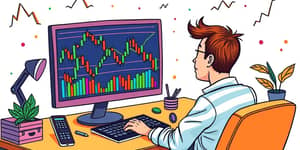
In an era of rapid digital transformation, consumer expectations are evolving at breakneck speed. Online retailers must pivot their strategies to keep pace with shifting buyer behaviors or risk losing loyalty and revenue. This article explores how leading e-commerce players are adjusting their approaches to meet modern demands and stay ahead of the curve.
As shopping habits diversify, businesses must embrace innovation and empathy. By understanding the core drivers behind consumer decisions—convenience, personalization, value, and sustainability—brands can craft experiences that resonate deeply and foster lasting connections.
Today’s shoppers prize speed and simplicity above all else. Over 80% of consumers expect home delivery, and 76% insist on free shipping and real-time tracking. When these options fall short, a staggering 81% abandon their carts, making delivery the top conversion barrier.
Retailers now invest heavily in logistics partnerships, same-day courier services, and smart lockers to reduce friction. Offering a frictionless, hassle-free returns process has become equally critical, with 97% of shoppers walking away after a poor returns experience.
Social media platforms have transformed from discovery channels into full-fledged marketplaces. By 2030, 70% of consumers expect to shop directly through Instagram, TikTok, or similar apps. Nearly 80% research products on social platforms before buying, and almost 70% complete purchases there.
Recognizing this shift, retailers collaborate with micro- and macro-influencers to create authentic narratives. Engagement rates soar when shoppers feel a personal connection, turning social followers into loyal customers with remarkable speed.
Artificial intelligence has moved beyond novelty to necessity. Roughly 70% of consumers seek AI-powered tools like virtual try-ons and personalized voice searches to inform decisions. Interactive chatbots and dynamic recommendation engines are now table stakes for top-tier e-commerce sites.
By leveraging machine learning and predictive analytics, retailers deliver tailored promotions and product suggestions. Enhanced with immersive customer experiences with AR, these personalized journeys drive higher conversion rates and deeper emotional engagement.
Inflation and budget constraints are reshaping purchase patterns. Forty percent of shoppers are switching to store brands, and 78% consolidate orders to maximize rewards. This hunting for deals underscores the need for competitive pricing and creative bundling.
Customer loyalty hangs by a thread: more than half of consumers penalize brands after a single bad experience. Conversely, elevating service from average to great yields a 97% increase in likelihood to recommend a brand to others.
Environmental concerns now influence 1 in 3 cart abandonment decisions. A majority of urban and millennial shoppers are willing to pay more for products backed by commitment to eco-friendly initiatives.
Brands are responding with recycled packaging, carbon-neutral shipping, and detailed reporting on transparent supply chains and ethical sourcing. Clear labeling and third-party certifications build trust and differentiate offerings in a crowded market.
Consumers no longer distinguish between online, mobile, and in-store—they expect a unified experience across all touchpoints. Approximately 30% of buyers engage with at least three distinct channels before completing a transaction.
To satisfy these demands, retailers integrate inventory systems, customer profiles, and loyalty programs across storefronts. Local pop-up events and community partnerships further personalize the brand relationship and foster grassroots loyalty.
To thrive in this dynamic landscape, e-commerce players must weave together multiple adaptation strategies. By focusing on innovation, empathy, and sustainability, brands can turn challenges into growth opportunities and forge deeper customer connections.
Ultimately, success hinges on listening to consumers and acting decisively. By anticipating needs and delivering exceptional experiences, e-commerce players can not only adapt to changing habits but also shape the future of retail. The journey towards a more connected, sustainable, and personalized marketplace is well underway—will your brand lead the charge?
References













